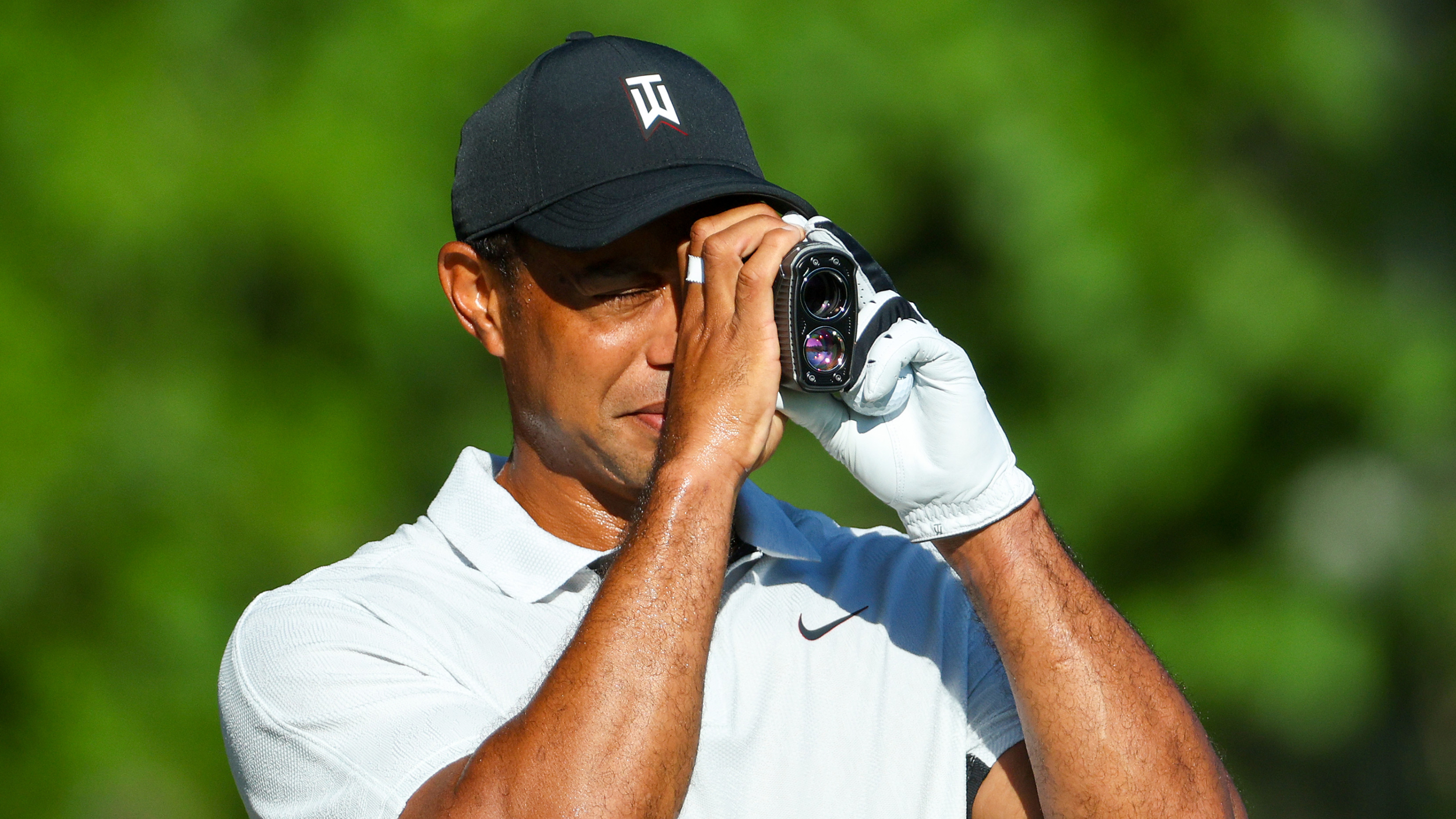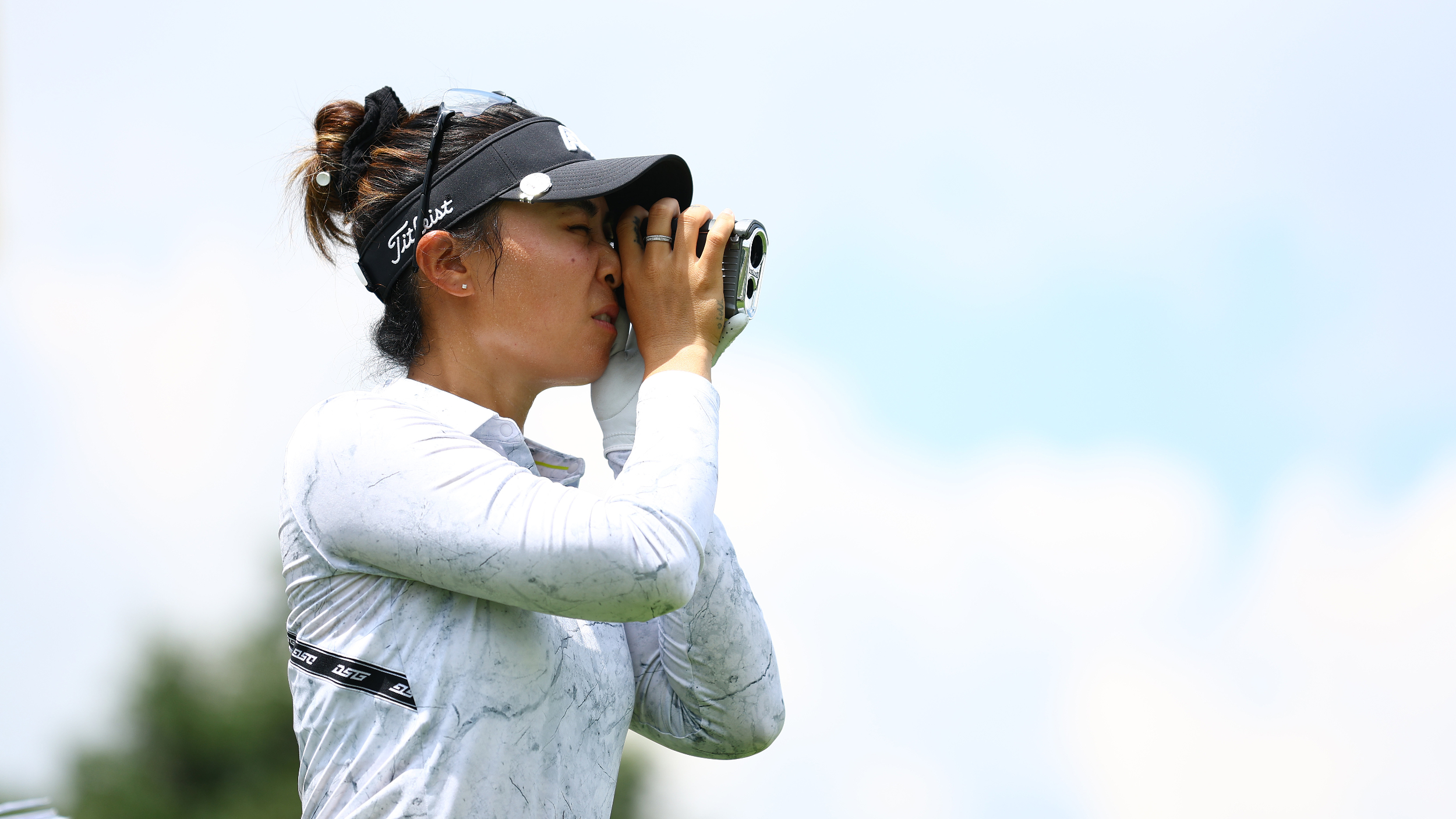
Laser rangefinders are hugely popular because they provide quick and accurate yardages and they can also help improve the flow of the game.
While the devices have been used at various levels of the game for many years, though, there are some grey areas over their acceptability in professional golf.
Perhaps the first sign of the game properly embracing rangefinders came in 2013 when, despite not being permitted in the Rules of Golf at the time, players at the 2013 USGA Women’s State Team and US Women’s Mid-Amateur were allowed to use them.
The following year, the game’s governing bodies began allowing rangefinders as a local rule in R&A and USGA amateur championships. Even then, though, their use could be prohibited by the organising committee of a tournament, and there was still no sign of them being allowed in the pro game.
Finally, on 1 January 2019, the possibility of using rangefinders or DMDs (distance-measuring devices) in the pro game became more likely with an amendment to The Rules of Golf.
Rule 4.3a (1) stated that rangefinders were now allowed, but only in a limited capacity. In short, you could use them to give information on distance and direction, but figuring out elevation changes with a rangefinder was outlawed.
The rule in question, 4.3a (1) reads:
Rule 4.3a (1) Distance and Directional Information.
- Allowed: Getting information on distance or direction (such as from a distance-measuring device or compass).
- Not Allowed: Measuring elevation changes, or Interpreting distance or directional information (such as using a device to get a recommended line of play or club selection based on the location of the player's ball).
Even with that change there is a reference to “Committee Procedures, Section 8; Model Local Rule G-5.” Basically, the use of rangefinders is still at the discretion of a tournament’s organising committee. That explains why you’ll see pros using rangefinders at certain tournaments, but not at others.
For example, at the 2023 PGA Championship, some wondered why players and caddies were using rangefinders. That was because of a decision taken two years earlier by the PGA of America to allow rangefinders in its Majors – the PGA Championship, KPMG Women's PGA Championship and the Senior PGA Championship.

So far, the women’s professional game has gone considerably further than the men's game in allowing rangefinders. After the Epson Tour and LET Access Series allowed rangefinders in competition in 2020, the LET and LPGA Tour followed suit the year after when they, along with the two developmental tours, agreed a deal with Voice Caddie for it to be their official rangefinder.

As part of the agreement, Voice Caddie handed each player an SL2 Laser Rangefinder with a special competition mode to ensure the device didn’t fall foul of the Rules of Golf.
The men’s professional game has generally been slower to embrace rangefinders. For example, the PGA Tour doesn’t allow them in its events, but players can use them in practice rounds. There is one high-profile exception, though...
Are LIV Golfers Allowed Rangefinders?
While the men's professional game has not yet fully embraced rangefinders, LIV Golf has proved more accepting of them than other circuits. Back in 2022, it announced they they could be used for the first time at its 2022 Team Championship, albeit only for distance-related information.
For #LIVGolfMiami Team Championship 2022, Distance Measuring Devices are permitted during the tournament for obtaining information on distance. Please note: Measuring elevation changes are prohibited.October 25, 2022
It clearly proved unproblematic, too, as they were also allowed during the 2023 LIV Golf League season, although Richard Bland was given a slow play penalty at Valderrama after taking too long to prepare for his shot, which included using a rangefinder as part of his routine.
Here is the full video of Richard Bland’s shot routine that got him a 1 stroke penalty for slow play. Did he deserve the slow play penalty? @oma_golf pic.twitter.com/FrtC0zmC8NJuly 3, 2023
There was another sign that the men's professional game is increasingly willing to accept new tech with the announcement in January 2024 that on-course tracking system Arccos, which, among other uses, tracks the location, club used and result of each shot, is now approved for use on the PGA Tour.
Overall, then, the signs point towards more widespread use of tech including rangefinders in the pro game in the future, although whether the genie is well and truly out of the bottle remains to be seen.







